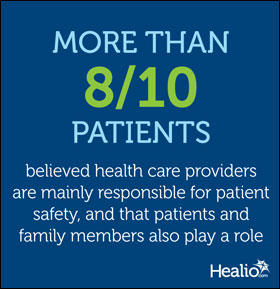Communication-and-resolution Programs May Avert Lawsuits From Medical Errors
Communication-and-resolution programs that encourage clinicians to explain facts and offer apologies for the medical error in patient injury cases did not increase lawsuits and may help prevent medical malpractice litigation, according to findings published in Health Affairs.
“Despite widespread adoption of tort reforms in the United States, concerns persist about the liability system’s effects on the cost of health care and on patients and physicians involved in adverse events,” Michelle M. Mello, JD, PhD, from Stanford Law School and Stanford University School of Medicine, and colleagues wrote. “In response, there has been increasing experimentation with approaches that channel disputes away from the tort system — most prominently, communication-and-resolution programs (CRPs). In these programs, hospitals and liability insurers disclose adverse events to patients; investigate; explain what happened; apologize; and in cases where substandard care caused harm, proactively offer compensation.”
Mello and colleagues implemented a CRP, named CARe (Communication, Apology and Resolution), at six hospitals in Massachusetts and evaluated whether institutions adhered to the program’s protocol and if it led to high compensations costs. The researchers also assessed clinicians’ attitude towards CARe. They culled data on 989 CARe events recorded by program staff members and from satisfaction surveys of 184 involved clinicians to examine case outcomes of the program.
The data revealed that good adherence to the program protocol was observed in the participating hospitals. Most program events (91%) did not meet compensation eligibility criteria; events that did meet the criteria had a median payment of $75,000 — a low cost compared with the median payment nationwide in 2015 of $225,000 when patients prevailed the malpractice lawsuits. Malpractice claims or lawsuits resulted from only 5% of events.
In addition, the CARe program frequently demonstrated patient safety improvements. Overall, clinicians reported support of CARe. However, they reported wanting better communication about the program from staff members.
“In these programs, hospitals scrutinize every serious harm event to answer the question, ‘What can we learn?’” Mello said in a press release. “Traditionally, a risk manager’s focus has been on the patients who complain about the care or threaten to sue. But every patient deserves to know that what happened to them is being taken seriously.”
Hospitals concerned about the risks involved with being honest with patients should be reassured by the low proportion of events that led to litigation, according to the researchers. Adverse events were not due to error 75% of the time and most malpractice claims arose when patients believed that clinicians communicated poorly or tried to cover up negligence, according to the researchers.
“Given the rarity with which communication-and-resolution events resulted in settlements, it is reasonable to wonder whether the programs are worth the time they require, but risk managers in our study thought they were,” Mello and colleagues wrote. “By providing explanations and expressions of sympathy for harms not arising from negligence, communication-and-resolution programs may avert lawsuits springing from misunderstanding.”
“Our findings suggest that communication-and-resolution programs will not lead to higher liability costs when hospitals adhere to their commitment to offer compensation proactively,” they concluded.
Recently, a nationwide survey by NORC at the University of Chicago of more than 2,500 adults found that while most American have positive experiences with the health care system, 21% have experienced a medical error, with errors regarding diagnosis and patient-provider communications being the most frequently reported, according to a press release. The survey also revealed that ambulatory settings are a common site for medical errors.

Furthermore, the survey indicated that nearly 50% of patients who perceived a medical error notified the health care provider or other staff member. More than eight in 10 patients reported that they believed health care providers are mainly responsible for patient safety, and that patients and family members also play a role.
“The survey results show that Americans recognize that patient safety is a critically important, but complex issue,” Tejal K. Gandhi, MD, MPH, CPPS, chief clinical and safety officer of the Institute for Healthcare Improvement (IHI) and president of the IHI/National Patient Safety Foundation Lucian Leape Institute, said in a separate press release. “The focus on diagnostic errors and the outpatient settings closely parallels other research in this area and confirms that health care improvers need to take a systems approach to safety that encompasses all settings of care, not just hospitals.”
These medical errors often impact the patient’s physical and emotional health, financial well-being or family relationships long term, according to the survey.
“Studies have looked at the physical and financial hardships associated with medical errors,” Linda K. Kenney, president of Medically Induced Trauma Support Services, said in the release. “This new survey is notable for highlighting how medical harm impacts emotional health and family relationships. I think one of the most valuable findings is the degree to which patients are willing, and expect, to be involved in their care. The fact that many people who experienced an error spoke up about it confirms that patients and families are vital to informing health care organizations about harm and how to prevent it in the future.” – by Alaina Tedesco
Disclosures: The authors report no relevant financial disclosures.
